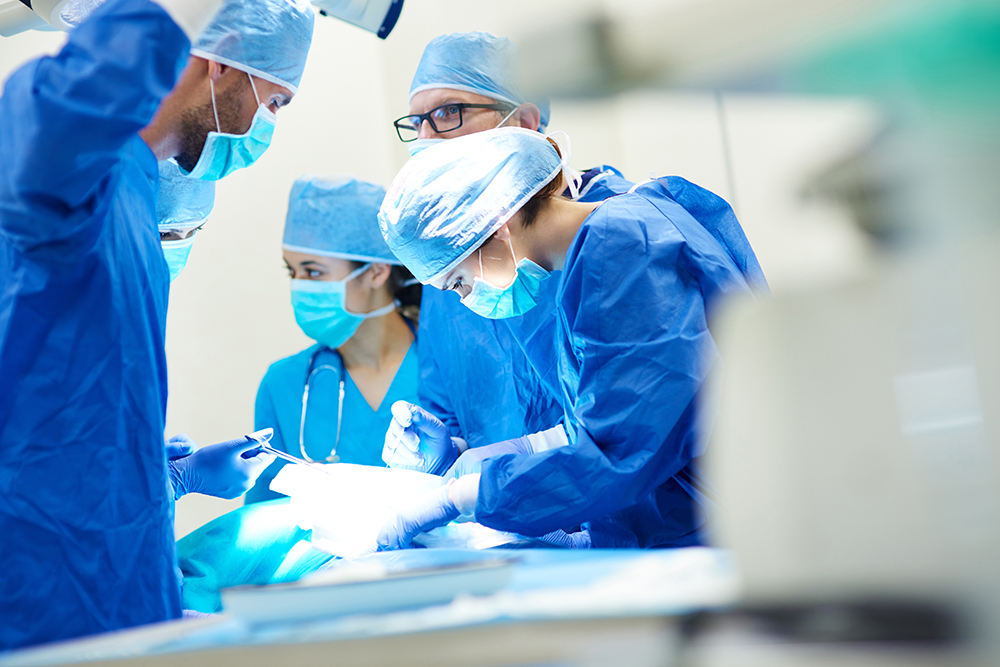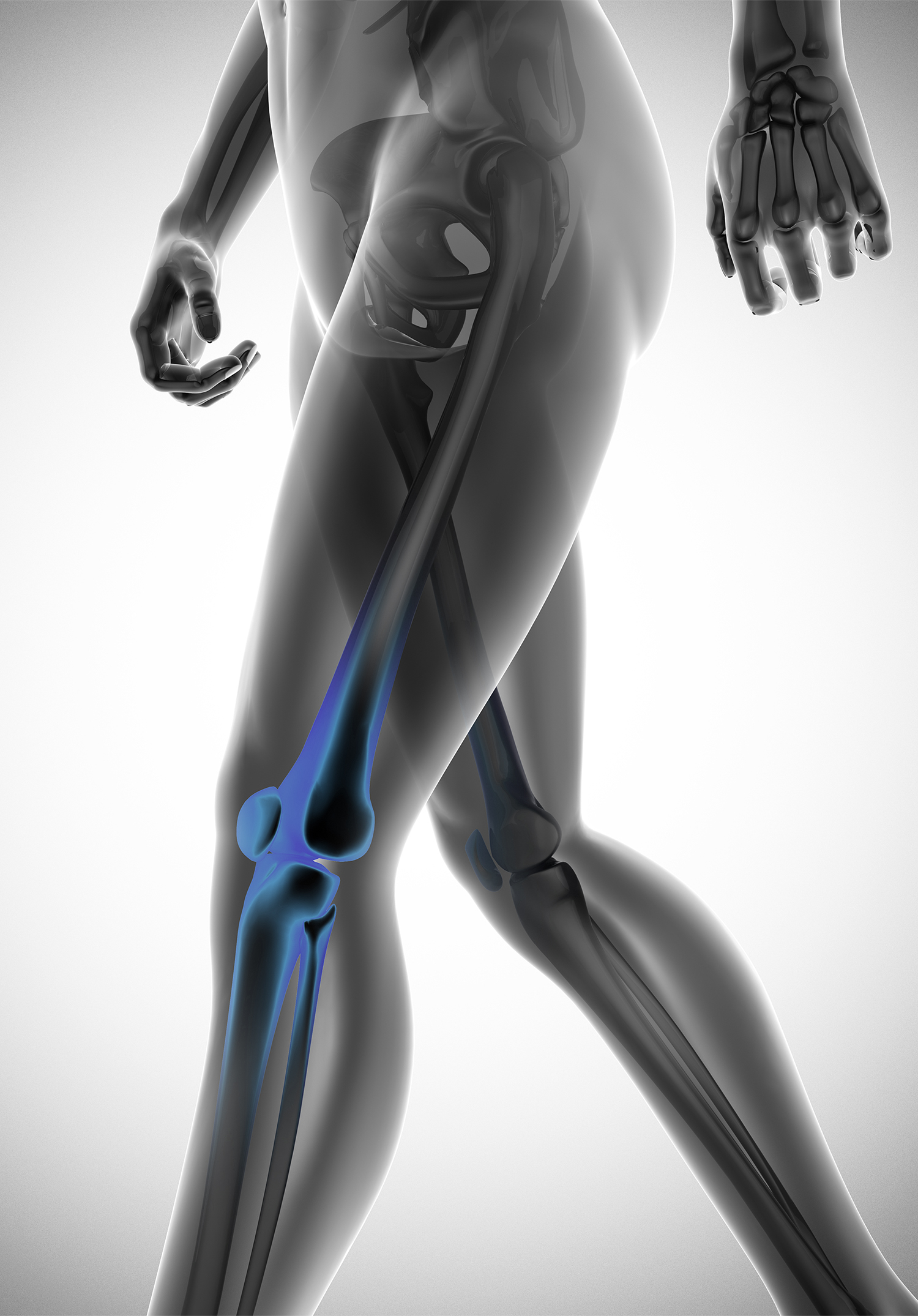ACL Reconstruction
If you tear the anterior cruciate ligament (ACL) in your knee, you may need to have reconstructive surgery. The ACL is a tough band of tissue joining the thigh bone to the shin bone at the knee joint. It runs diagonally through the inside of the knee and gives the knee joint stability. It also helps to control the back-and-forth movement of the lower leg.
ACL injuries
Knee injuries can occur during sports such as skiing, tennis, squash, football and rugby. ACL injuries are one of the most common types of knee injuries, accounting for around 40% of all sports injuries. You can tear your ACL if your lower leg extends forwards too much. It can also be torn if your knee and lower leg are twisted.
Common causes of an ACL injury include:
• landing incorrectly from a jump
• stopping suddenly
• changing direction suddenly
• having a collision, such as during a rugby/football tackle
If the ACL is torn, your knee may become very unstable and lose its full range of movement. This can make it difficult to perform certain movements, such as turning on the spot. Some sports may be impossible to play.
Reconstructive ACL surgery
A torn ACL can’t be repaired by stitching it back together. However, it can be reconstructed by grafting (attaching) new tissue onto it. The ACL can be reconstructed by removing what remains of the torn ligament and replacing it with a tendon from another area of the leg, such as the hamstring or patellar tendon. The patellar tendon attaches the bottom of the kneecap (patella) to the top of the shinbone (tibia).
After you’ve been anaesthetised, the surgeon will carefully examine the inside of your knee, usually with a medical instrument called an arthroscope (see below). Your surgeon will check that your ACL is torn and look for damage to other parts of your knee. Any other damage found might be repaired during the surgery to your ACL or after your operation.
After confirming that your ACL is torn, your surgeon will remove the graft tissue, ready for relocation.
Graft tissue
A number of different tissues can be used to replace your ACL.
Tissue taken from your own body is known as an autograft. Tissue
taken from a donor is known as an allograft. A donor is someone who
has given permission for parts of their body to be used after they
die by someone who needs them. Before your operation, your surgeon
will discuss the best option with you. Tissues that could be used to
replace your ACL are listed below.
• A strip of your patellar tendon – this is the tendon running from
the bottom of the kneecap (patella) to the top of the shin bone
(tibia) at the front of your knee.
• Part of your hamstring tendons – these run from the back of your
knee on the inner side, all the way up to your thigh.
• Part of your quadriceps tendon – this is the tendon that attaches
the patella to the quadriceps muscle, which is the large muscle on
the front of your thigh.
• An allograft (donor tissue) – this could be the patellar tendon or
Achilles tendon (the tendon that attaches the back of the heel to
the calf muscle) from a donor.
• A synthetic graft – this is a tubular structure designed to
replace a torn ligament.
The most commonly used autograft tissues are the patellar tendon and the hamstring tendons. Both have been found to be equally successful. Allograft tissue may be the preferred option for people who aren’t going to be playing high-demand sports, such as basketball or football, as these tendons are slightly weaker.
Synthetic (man-made) tissues are currently used in certain situations, such as revision surgery and multi-ligament injuries. The graft tissue will be removed and cut to the correct size. It will then be positioned in the knee and fixed to the femur (thigh bone) and tibia (shin bone). This is usually carried out using a technique known as a knee arthroscopy.
Arthroscopy
An arthroscopy is a type of keyhole surgery. It uses a medical
instrument called an arthroscope, which is a thin, flexible tube
with bundles of fibre-optic cables inside that act as both a light
source and camera. Your surgeon will make a small incision on the
front of your knee and insert the arthroscope. The arthroscope will
illuminate your knee joint and relay images of your knee to a
television monitor. This will allow the surgeon to see the inside of
your knee clearly. Additional small incisions will be made in your
knee, so that other medical instruments can be inserted. The surgeon
will use these instruments to remove the torn ligament and
reconstruct your ACL.
Your surgeon will make a tunnel in your bone to pass the new tissue through. The graft tissue will be positioned in the same place as the old ACL, and held in place with screws or staples that will remain in your knee permanently.
Final examination
After the graft tissue has been secured, your surgeon will test that
there’s enough tension in it (that it’s strong enough to
hold your knee together).
They’ll also check that your knee has the full range of motion
and that the graft keeps your knee stable when it’s bent or
moved. When the surgeon is satisfied that everything is working
properly, they’ll use stitches to close the incisions and
apply dressings. After the procedure, you’ll be moved to a
hospital ward to begin your recovery.
ACL surgery fully restores the functioning of the knee in over 80% of cases. However, your knee may not be exactly like it was before the injury, and you may still have some pain and swelling. This may be because of other injuries to the knee, such as tears or injuries to the cartilage, which happened at the same time as or after the ACL injury.
As with all types of surgery, there are some small risks associated with knee surgery, including infection, a blood clot, knee pain, and knee weakness and stiffness.
After having reconstructive ACL surgery, a few people may still experience knee pain or instability. Recovering from surgery usually takes around six months. However, it could be up to a year before you’re able to return to full training for your sport.
For more information on acl reconstruction please do not hesitate to get in touch with Mr Atwal through our appointments page.



QUICK ENQUIRY


